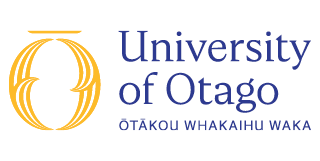Our leading research activity and expertise are focused in six major research areas.
Analytical measurement and computational methods
Researchers in this theme apply computational and analytical techniques to gain insight into chemical and physical systems of interest. This includes examining the fundamental origins of reactivity and electronic behaviour, characterising surfaces and crystalline solids of catalytic, electronic, pharmaceutical, forensic and astrophysical interest, investigating spectroscopic-based diagnosis of disease and the development of new chemical sensors.
Theme members
- Dr Courtney Ennis
- Associate Professor Anna Garden
- Professor Keith Gordon
- Dr Alan Hayman
- Associate Professor Christina McGraw
- Dr Sara Miller
- Dr Mohamed Sharafeldin
Research collaboration
Researchers in this theme contribute to national research collaborations including:
- Coastal People: Southern Skies
- Dodd-Walls Centre for Photonic and Quantum Technologies
- MacDiarmid Institute for Advanced Materials and Nanotechnology
Chemical synthesis
This theme addresses challenges in synthetic chemistry with the aim of understanding mechanistic processes and developing new synthetic methodology applied toward natural products, drug discovery, supramolecular assemblies, carbon-rich materials, polymers, organometallic complexes, catalysts for future fuels and porous materials.
Theme members
- Professor Sally Brooker
- Professor James Crowley
- Professor Lyall Hanton
- Associate Professor Bill Hawkins
- Dr Nick Green
- Professor Dave Larsen
- Professor Nigel Lucas
- Professor Nigel Perry
- Dr Andrea Vernall
- Dr Alan Hayman
Research collaboration
Researchers in this theme contribute to national research collaborations including:
- MacDiarmid Institute for Advanced Materials and Nanotechnology
- Maurice Wilkins Centre for Molecular Biodiscovery
- Plant and Food Research
- Ferrier Research Institute
Chemistry and the environment
Research in this theme focuses on the development of new tools and methods for probing the environment in its natural and perturbed state, including under extreme terrestrial and extra-terrestrial conditions.
Theme members
Research collaboration
Researchers in this theme contribute to national research collaborations including:
- Coastal People: Southern Skies
- MacDiarmid Institute for Advanced Materials and Nanotechnology
- Plant and Food Research
Chemistry at the interface with biology and medicine
Researchers in this theme are working towards developing molecular and analytical approaches for probing complex biological systems, improving understanding of disease mechanisms and designing molecules and materials for use as therapeutic or pharmaceutical agents.
Theme members
- Professor James Crowley
- Professor Lyall Hanton
- Associate Professor Bill Hawkins
- Dr Alan Hayman
- Dr Nick Green
- Professor Dave Larsen
- Dr Sara Miller
- Dr Eng Wui Tan
- Dr Andrea Vernall
- Professor Nigel Perry
Research collaboration
Researchers in this theme contribute to national research collaborations including:
- Dodd-Walls Centre for Photonic and Quantum Technologies
- Ferrier Research Institute
- MacDiarmid Institute for Advanced Materials and Nanotechnology
- Maurice Wilkins Centre for Molecular Biodiscovery
Functional and future materials
The research activity in this theme is directed towards the fabrication, measurement and prediction of the structure and performance of advanced materials from the nanoscale to the macroscale using state-of-the-art analytical tools and sophisticated models.
Theme members
- Professor James Crowley
- Dr Courtney Ennis
- Associate Professor Anna Garden
- Professor Keith Gordon
- Professor Nigel Lucas
- Associate Professor Christina McGraw
- Dr Sara Miller
- Professor Sally Brooker
Research collaboration
Researchers in this theme contribute to national research collaborations including:
- Dodd-Walls Centre for Photonic and Quantum Technologies
- MacDiarmid Institute for Advanced Materials and Nanotechnology
- Riddet Institute
Sustainability and green chemistry
Researchers in this theme design and employ novel green chemistry strategies for molecular and materials assembly, as well as create and explore innovative materials, catalysts and technologies toward a zero-carbon future.
Theme members
- Professor Sally Brooker
- Professor Keith Gordon
- Associate Professor Anna Garden
- Professor Nigel Lucas
- Professor Nigel Perry
- Professor James Crowley
Research collaboration
Researchers in this theme contribute to national research collaborations including:
